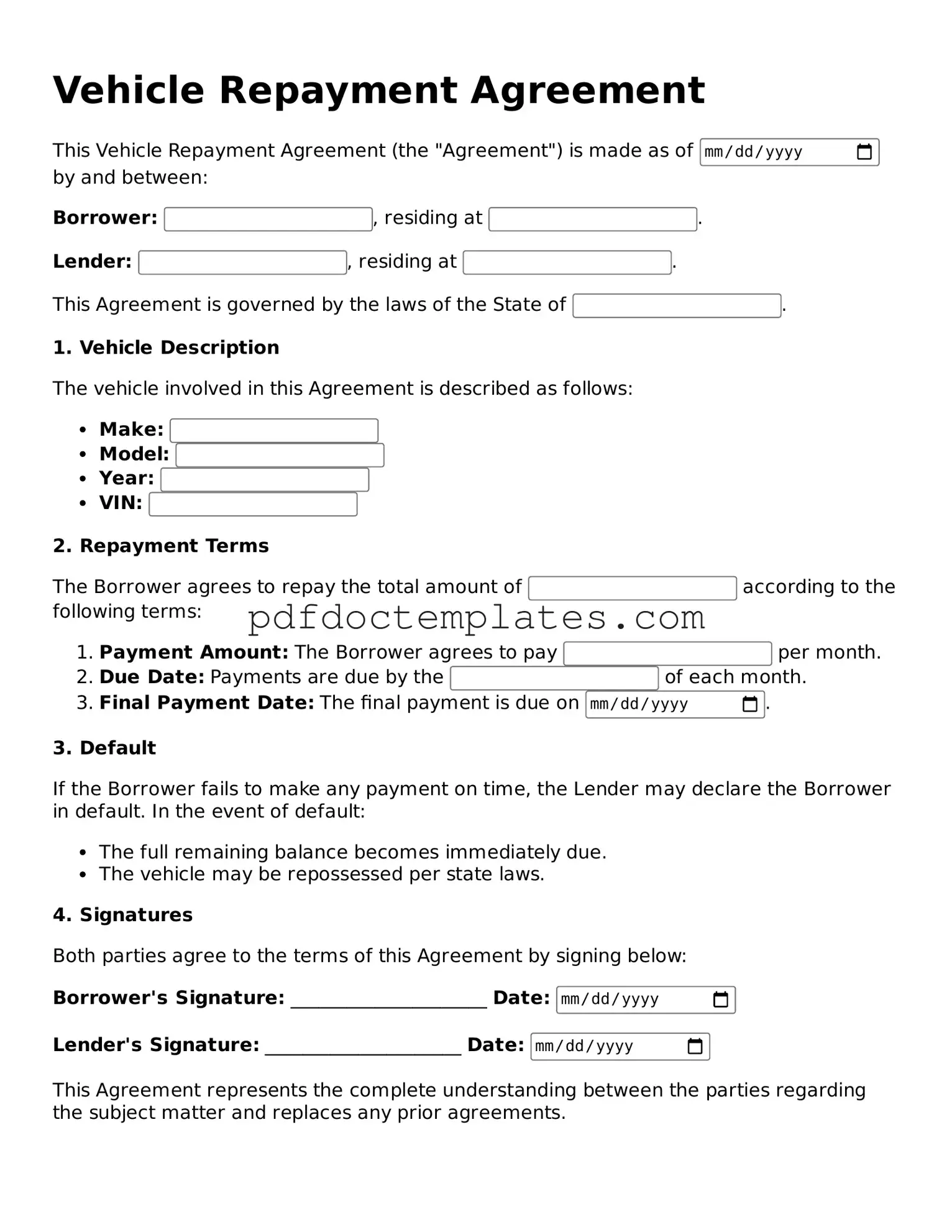Printable Vehicle Repayment Agreement Template
A Vehicle Repayment Agreement form is a legal document that outlines the terms under which a borrower agrees to repay a loan for a vehicle. This agreement protects both the lender and the borrower by detailing payment schedules, interest rates, and consequences of default. Understanding this form is crucial for anyone entering into a vehicle financing arrangement.
To ensure a smooth repayment process, consider filling out the Vehicle Repayment Agreement form by clicking the button below.
Access Your Document
